Smite is a MOBA (Multiplayer Online Battle Arena) where you play as a god competing against other gods in teams of 3 to 5. Sound like another DotA clone to you? Read this test review to find out what developers Hi-Rez Studios have done to avoid making Smite just another stupid clone.
A proven concept, dressed up in new clothes
Let me begin by explaining how the game works for those of you who aren’t familiar with MOBA games. Like I already mentioned, you play on one of two teams, each one made up of three or five players, and the object is to defeat the other team’s Titan before your own falls. Each player takes on the role of a god, which you either choose a pool of available gods, or are randomly assigned. In order to reach the enemy Titan, you have to follow a “lane” and destroy the defensive towers and Phoenixes barring your path. You cannot attack the Titan until your team has destroyed all of the defensive structures and Phoenixes in each of the three lanes. Player gods are accompanied by “minions”, weaker units who spawn at the player’s own Phoenix and advance in waves.
Between the three main lanes is a network of paths through the “jungle”, where you can fight neutral creatures who drop items that grant buffs to mana, damage, or speed. Killing other gods and their minions, as well as destroying defensive structures grants you experience points (EP) and Gold. Experience points allow you to level up, making you more powerful, unlocking new skills, and enhancing the ones you already have. Gold allows you to buy items to improve your god’s attack, defense, or magic capabilities before matches.
Almost all game modes work like this, though the number of lanes and defensive structures, team size, and god selection options might vary from one mode to another. The only mode that differs significantly from the others is Arena mode. As the name suggests, you play in an arena. Each team begins with 500 points, and the goal is to be the first team to bring the other team’s points down to zero. You do this by killing enemy gods ( – 5 points) and minions ( – 1 point). Also, each time one of your own minions reaches the enemy’s portal, they lose an additional point. Arena matches are usually more action-packed and shorter than other modes, and provide a nice change from the standard gameplay.
The gods themselves, derived from several real-world mythologies, are divided into several different categories. There are melee and remote attackers, magic-users, warriors, and ranger types. These are designed in such a way that each one will play a specific role in combat. Typical roles might include support, healer, tank, and damage dealer. Since certain gods are better are performing certain tasks, tactics also play a major role in Smite. Like in most MOBAs, only certain gods are available when you first start the game. You can unlock new gods with Favor, which you earn from playing matches in the game, or with Gems, which can be purchased with real money or acquired as part of certain promotions or special offers. There’s also a “God Rotation”, which allows you to test out certain gods you haven’t acquired yet.
Nothing I’ve written so far makes Smite all that different from other MOBA games. However, the one thing that really sets this game apart is that unlike in other MOBA games, which typically use top-down perspective, gods in Smite are controlled from a third-person perspective. Also, your god does not target enemies automatically, but each attack must be controlled by the player. These two changes help make Smite more exciting, and remove it even further from the RTS genre, which most MOBAs are considered to a be a subgenre of.
Does money rule this world?
Smite is a free-to-play game, as you probably already guessed from the two types of currency mentioned above. Naturally, this means that you can only get ahold of certain content by spending Gems, i.e. real money. In this game, it’s pretty much restricted to “skin packets” (different costume designs for your gods), and some of these can also be purchased using Favor, meaning you can get them without spending real money. Of course, you need a lot of Favor, but that’s understandable. You can also purchase gods using real money, but there are no gods that can be acquired only in this way. So, money does not in fact rule the world of Smite, as it has no real direct impact on gameplay, and you can still have a lot of fun without investing any of your hard-earned cash.
Training wheels
The developers have done pretty much everything they could to make it easy for beginners to quickly get the hang of the game. Most game modes have to be completed against bots or in co-op mode before you can play real matches against other players. Not only is this good for beginners, but it also reduces the frustration often felt by seasoned players when dealing with bungling noobs. Also, before you play a match in a mode you haven’t played yet, they invite you to watch a YouTube video succinctly describing the basic rules of the game mode. Another feature that makes things a bit easier for beginners is that before each match they give you the option of selecting items and abilities yourself or letting Smite do it for you. This can be especially helpful when you’re playing a certain god for the first time.
Window dressing
The graphics and Smite are definitely not cutting edge, but the gods are beautifully designed and the various playable maps also look really good. Inspired by Classical Antiquity, the different environments fit the whole “gods” theme well, though I would have liked to see more influence from the other cultures the game’s gods come from. In any event, graphics really aren’t the most important thing in this genre, as popular games like League of Legends can attest.
The background music in the lobby is as well as done and entertaining as the god animations. There’s no music during matches themselves, but that’s not really a problem. The sound effects are also realistic and contribute to the overall atmosphere.
Official Cineastic Teaser





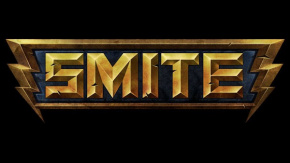


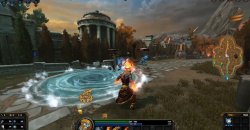
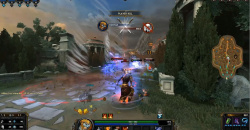
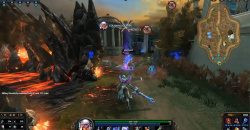
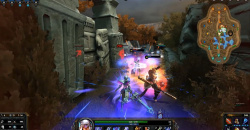
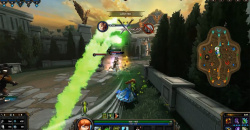
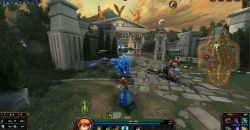
жанра, типичные футуристическим
+ genre typical action-packed
- genre typical action-packed
it seems you didn't make up your mind whether this is a pro or a con